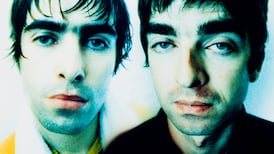Michael Eavis named it as his favourite part of Glastonbury, James Hetfield of Metallica name-checked it on the BBC and Joe Strummer was a regular visitor. Yet only a privileged few festival-goers have ever located the unofficially-titled underground piano bar - and fewer still could have found it the next day.
Entering its 35th year, Glastonbury prides itself on its arts and cultural offerings away from the main stages – this year headlined by Foo Fighters, Kanye West and The Who – but this particular attraction has been omitted in the Glasto map and unmarked on site since a group of Irish creatives first came up with the novel area in 1994.
“The first year we went there, the rest of the crew in the Greencrafts Village were wondering why we came all the way over over to dig a hole,” says Mick Curtin, a co-founder. “We got some amount of ribbing for that.

“But when the festival started, it proved popular. People came in because they were curious about what was inside, and got into the spirit of things. People brought out their guitars or instruments and entertained whoever was there. And it was intimate – only 30 people could fit in at any one time.”
The idea germinated the previous year, when Dubliner Ferghal Leddy rallied his friends to come check out the festival. The group – who also went on to form Gramophone Disco and Bog Cottage, popular attractions at Electric Picnic and Body & Soul among other Irish festivals - were enthused by the creativity in the area "and the blag”. They submitted an application to create an installation of a dug-out hole covered by a wooden frame, which was then covered with sod to make it look like just a small hill from the outside.
Mick, a tree surgeon by day, explains: “The other challenge was that we couldn’t use electricity as it was in the Green Fields area. So we lit it using candlelight and paraffin lamps. We had to do a test run in a field in Co Meath to make sure everything worked.
“For the first year, it was 20-foot long and eight-foot wide, and we dug down to six-foot at its deepest. But every year it increased in size and scale.”
Evidently, building a subterranean performance area without electricity wasn’t enough of a challenge, so in 1999, Ferghal came up with the idea of transporting a disused grand piano from Rathmines to a hole in the ground in Glastonbury.
“I remember I was in France on holiday and I got a call from the team in a panic,” recalls Mick. “They told me, ‘will you please speak to Ferghal, he has this mad idea to bring a piano over for the underground space – you need to tell him it’s not possible’.”
As luck would have it, it’s a good thing he didn’t. The piano, and the manmade stage on which they housed it, have become the focus of activities since then. In 2000, Jools Holland used it to play an impromptu set – the same year that Billy Bragg sang, and Michael Eavis read out a hymn.
Despite its unmarked status, the feature outgrew its home – queues to get in were larger than the size of the space, even though out of pure mischief they’d advertise it as anything from a fracking site to a blacksmith’s workshop.
No stopping its popularity, the site became the noisy neighbours of the Greencrafts Village. To avoid potential arguments, which have no place at the festival, the hole moved from its original place to…well that would ruin the fun.
The structure too has evolved, on what Mick describes as “a shoestring budget”. It’s now about 40 foot long, eight foot underground at its deepest and with the necessary fire exits. Inside they’ve added a rogue’s gallery complete with stocks, different seating levels, and a royal box because, why not? One year they built its entrance through the portaloos, another so that brave souls would go through a small tunnel before coming out from under the stage.
The build takes two weeks, and the team of around 12 crafts people, builders and artists aim to have it green-lit by structural engineers on the Wednesday of Glastonbury week, with the decorative flair completed in time for Friday’s influx.
It’s a mainly nocturnal affair, with anything from beat poetry to brass bands entertaining in their Corruption Cabaret, though the rowdy crowd hold no prisoners. (Except the ones in the stocks.)
After a weekend of festival fun (what happens at Glasto stays at Glasto…) it’s time to dismantle and disappear.
“We can’t reuse the hole because it’s a working farm the rest of the year – but it’s probably what helps us come up with new ideas every build,” explains Mick. “Before we leave, we dismantle the structure and then fill the hole up again. There’s barely a trace of us left, which is good news for Michael Eavis’s cows.”
Not such good news for those whose underground piano bar experience is the highlight of the festival – indeed, like Eavis himself.
--------------------------------------------------------------------
Glastonbury weather forecast: regular spells of rain, with the odd moment of sun. It's not going to be a total washout, but there will be intermittent rain from Friday 12pm onwards, with Saturday mostly dry and the odd sunny spell throughout.









